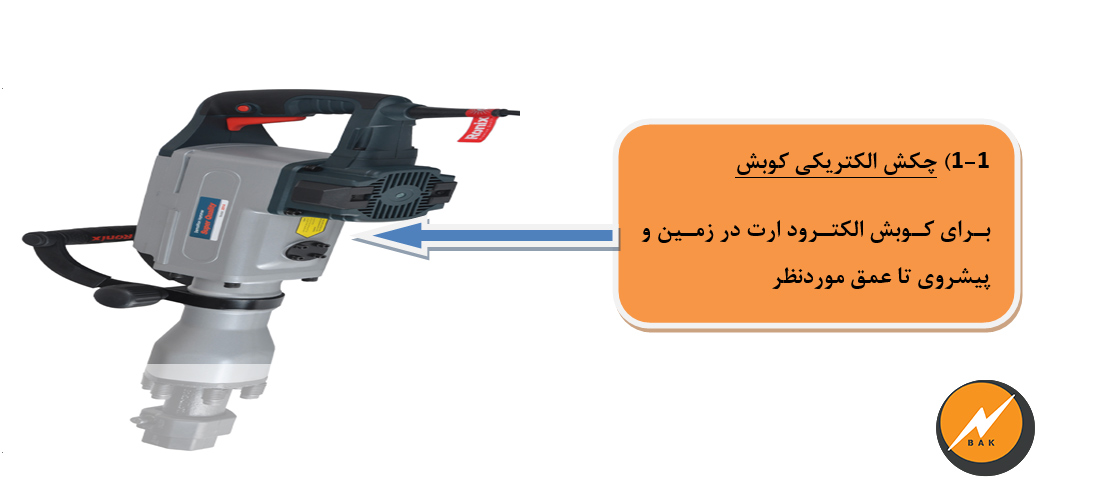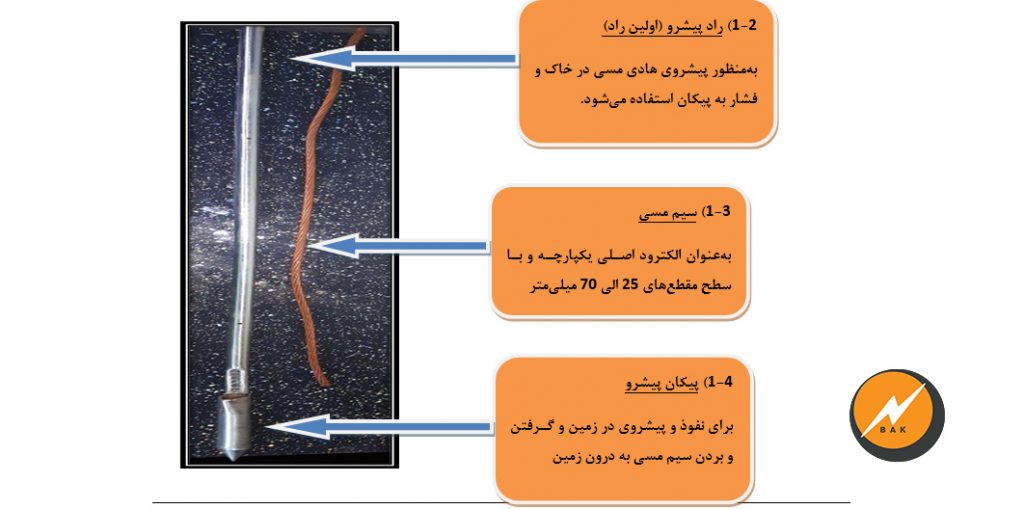Due to the importance of earthing systems in order to save human lives and proper operation of electrical systems and prevent damage to devices and prevent fires, fortunately the Ministries of Energy and Housing and Engineering have a good approach to this issue and all places should be equipped with earthing systems, so All places under construction are required to comply with Article 13 of the new version 95. This topic has a good approach to the rod electrode, but the radars on the market are not responsive, so there is an opportunity to improve the performance of the earth in industrial buildings by making this product. Let’s be and dig the ground well.

Technical problems with common products on the market
Execution of other earth electrodes (ground) including earth plate with difficulties such as drilling wells for plate electrodes and the need for reducing materials and drilling efforts and filling wells and long execution time and the need for welding and connections and compared to existing rods that have little progress They are not integrated and they are quickly damaged by damage during execution, and on the other hand, they need welding or fittings to connect to the place of use. It is also not possible to inject regenerating materials into conventional radars.
Description of previous knowledge and advanced product history
In the past, only the earthen plate was used, which in addition to digging and the need to dig wells and the need for reducing materials, but with the development of earthen knowledge, the quality of the rod was improved day by day and it was possible to replace it with the plate. Copper and steel core coating (two types of caper bond and caper valve) were made and used and deep electrodes were offered, but there were electrodes up to one and a half meters in the market, which caused the failure to advance into the ground. A coupling with an access length of about 3 meters was also an unreliable and non-integrated connection, so this type of electrode had a problem, but the electrode of this invention is the pioneer of the new generation of rad ground.
The basis of the proposed solution for it
In earth calculations, it is proved that when one dimension of the electrode is larger than its other dimensions, the electrode is better and according to the calculations, the earth resistance of the earth electrode is proportional to the length of ground progress and soil resistivity. It penetrates deep into the soil, reaches better soils and improves quality. This electrode consists of two types of main and auxiliary electrodes and its main electrode is copper or galvanized conductor and the sub-electrode includes arrow and leading rod of the developing rod so that the copper conductor is inside the arrow and the leading rod is added to it and pound it up to one meter forward. From then on, this work will continue with the developing radars. In order to implement the ground system, this type of radar can be moved to the depths of the earth instead of occupying space and cost, and possibly digging wells, and getting a better ground result.
Describe how to run the leading rod and the arrow of the deep percussion rod electrode


Clearly and accurately state the advantages over the former, in such a way that the feature is new and its technical impact
Ease and speed of execution is much higher compared to conventional wells, because it does not need to dig wells, so it is performed easily and quickly, and the time is reduced from three days to several hours and is executed easily.
. Lack of effect of bentonite reducing material and substandard copper plate in the market and lack of quality diagnosis (the possibility of substandard ground plate due to the high cost of copper and substandard materials is very high.) Because this method does not use any of these materials, so it is safer.
In this method, due to the percussion and no need to dig, the soil integrity of the site does not change (emphasis is always placed on wells in areas where the soil is virgin). It will be filled and the soil integrity of the breach site and the quality of the ground system will be greatly reduced.
Due to the lack of soil excavation, heavy motor vehicles do not settle during traffic and there is a possibility of falling on the pit while digging conventional wells.
No need for bolted joints or any cable washers (due to the differences in the alloys, they form a galvanic cell and therefore cause corrosion and disconnection in the first few years).
In this method, the resistance of the ground electrode is measured by tapping the vertical electrodes on the ground until the desired resistance is reached.
The rods available in the market for running at a depth of 4 meters face the problem of lack of integration, and this type of rod is completely integrated and does not have connection problems and the possibility of cut or corrosion.
Radars on the market are damaged and injured during pounding due to their copper and iron core (copper bond) coating, and from there, the corrosion point (formation of corrosion galvanic cells in the soil) will have a very short shape and life.
The rods available in the market after hitting the ground should be connected to the copper conductor by welding or bolts and clamps to reach the required ground, but these rods are fully integrated and therefore the conductor is connected directly to the required point without any connection and welding. .
On the other hand, the earth plates available in the market must be connected to the copper wire by welding or clamping, which does not require any connection in this design.
By installing holes in the wall of the leading and developing rods, it penetrates the ground easily and smoothly during knocking, and in the future, it is possible to inject reducing materials into all the rods and from there to the main earth conductor.
Explain at least one implementation method to use
For execution in places and buildings, care should be taken to check the location and not to pass any electrical installations and pipes or water or electricity. To prepare the electrode, apply an integrated hammer and coil of bare copper or galvanized wire for residential buildings and then start hammering with an electric or pneumatic hammer (depending on the stiffness of the soil type) and according to the law of Article 13 at least one rod 4 One meter or two 2-meter rods are enough to be pounded, the ground resistance is measured during pounding, the use of lubricants during pounding is facilitated, and if the soil of the area dries in the future, we can remove the reducing material from the valve. We have installed it on the final developer rod and pour it into the pipes, thus reducing the main conductor and reducing the earth resistance.
Explicit mention of industrial application
Regarding the implementation of the Law on Article 13 of the National Building Regulations, Edition 95 in 13-5-4-1, paragraphs B and P, as well as P-1-10-4-3, Paragraph A, the implementation in the construction industry, as well as all places, facilities and industries of this The work is very versatile.
The discharge of lightning currents due to the sharpness of the vertical electrode tip is much better than other methods such as plate or mesh, so it can play a good role in lightning arresting systems. This innovation is very suitable for places that need a clean earth system with low electrical impedance, such as sensitive electronic systems (servers, instruments, telecommunications, computer networks, etc.).


